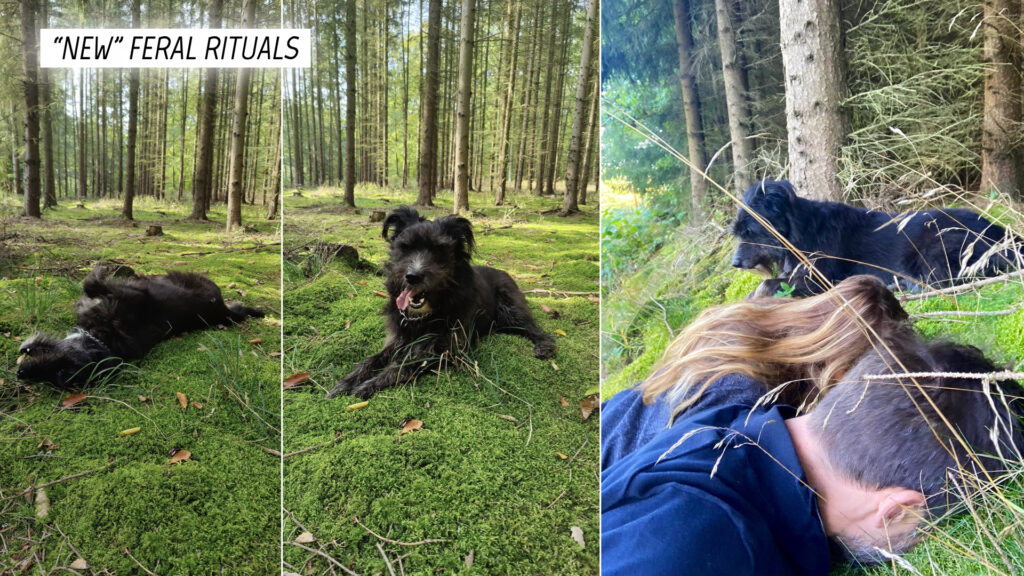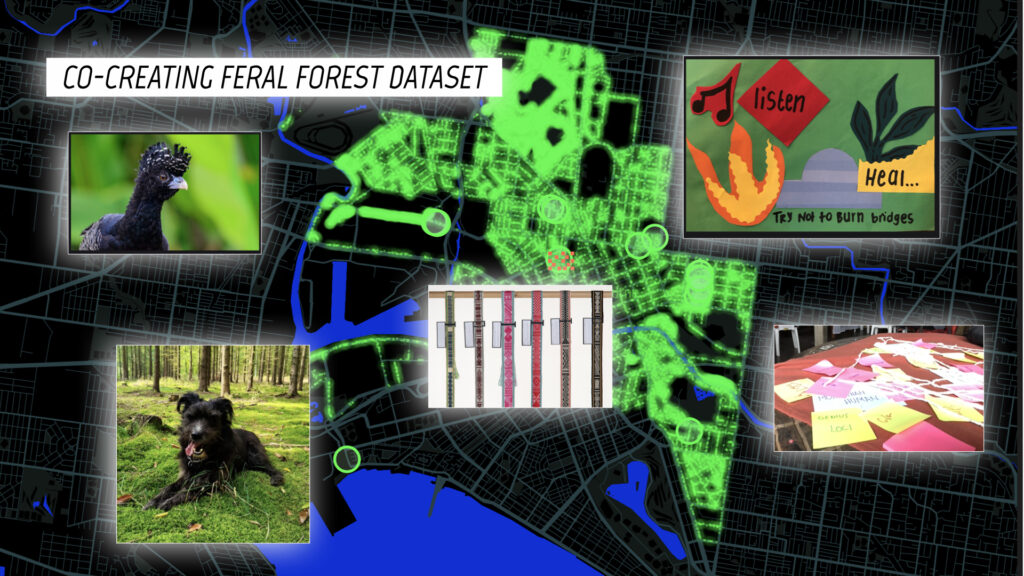The Open Forest inquiry experiments with situated, embodied, spontaneous and multispecies – or what we call ‘feral’ – ways of sensemaking and co-creating. We explore feral as a quality to appraise open-ended, unexpected, more-than-human encounters that unfold beyond the bounds of human control, embracing uncertainty and surprise as both generative and critical elements. We use feralness as a lens for understanding and experimenting with the complexity of forest epistemologies, as a metaphor for denoting the kind of data we are assembling, and as a methodological approach guiding the collaborative project activities.
The experimental forest walks are shaped by various feral, more-than-human factors that are necessarily out of human control, such as seasons, weather, technology, dogs and the many evolving forest lives in and around the places that we walk-with. For example, the Bohemian walks guided by Chewie – who holds extensive sensorial knowledge of the local forest landscape – provide a unique other-than-human perspective. Chewie’s sense of orientation and interests define what is worth exploring and his sensory capacities become key. Human senses are present but their usual connection to rational decision-making is put on hold.

The spontaneity and feralness of the walks influence the form and texture of the forest stories that are shared by participants and add to the constellation of forest data emerging from the project. The Feral Map – as the main story archive – itself experiments with an open curation and is left open to contributions in varied forms, including forest stories and new forest creatures.

The feral forest data resulting from these collaborative activities – whether woven into belts, generated through drifting or inspired by a dog’s forest interests and movements – can help challenge dominant epistemological framings of forests and cultivate an acknowledgment of the diverse, situated forest epistemologies defining what a forest might be and to whom.